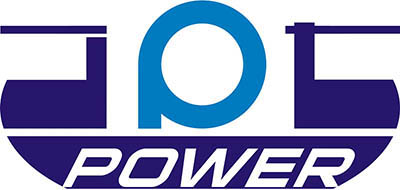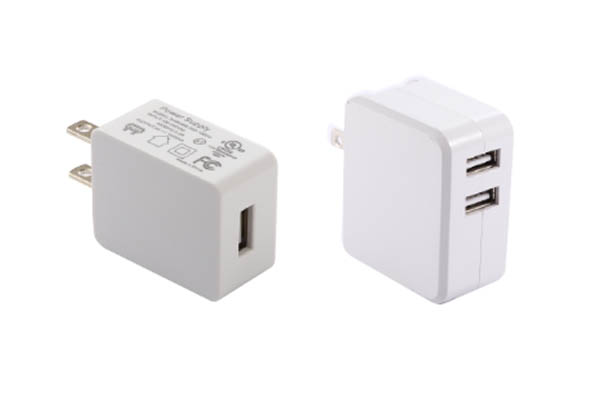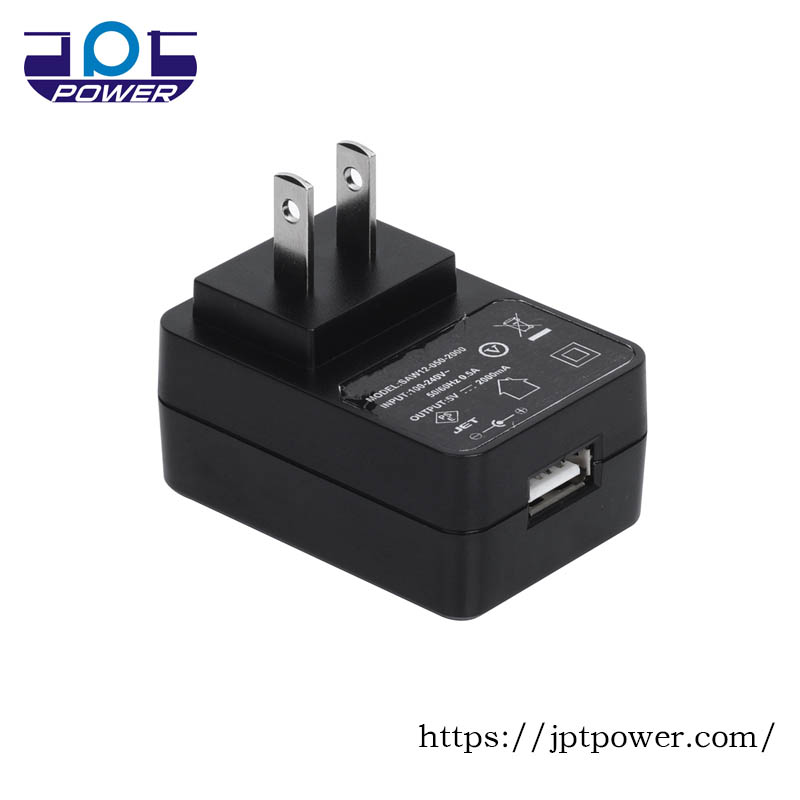1port USB power adapter and 2port USB power adapter Which charges faster
I. Introduction
With the popularity of smart devices, USB power adapters have also become an indispensable charging tool. When we need to charge our phones, tablets, smartwatches, Bluetooth speakers, or other electronic devices with batteries, we often hesitate between the 1port USB power adapter and the 2port USB power adapter. This article will discuss which adapter charges faster from many aspects such as technical principles, charging efficiency, applicable scenarios and market trends to help users make smarter choices when purchasing.
II. Technical principles
A. USB power adapter working principle:
1. The power adapter is mainly composed of transformer, rectifier circuit, filter circuit and voltage regulator circuit.
2. The transformer converts the high-voltage AC into the suitable low-voltage AC.
3. The rectifier circuit converts alternating current to direct current, and the filter circuit removes clutter in the current through filtering.
4. The voltage regulator circuit can ensure that the output voltage is stable, so as to ensure that the equipment can work stably for a long time.
B. The difference between single-port and dual-port adapters:
1. The single-port adapter has only one USB port and can charge only one device.
2. The dual-port adapter has two or more USB interfaces, which can charge multiple devices at the same time, and is more suitable for charging multiple electronic adapters once on business trips and trips, eliminating the need to carry multiple chargers.
C. Charging parameters and their impact:
1. The output voltage (V) and output current (I) of the power supply determine the output power (W) and its charging speed.
2. The output voltage of the charger needs to match the voltage required by the device, otherwise the electronic device cannot be charged or even damaged.
3. The maximum output current of the charger cannot exceed the maximum charging current of the device, otherwise it will cause damage to the device or security risks.
4. Other factors such as wire, battery capacity, charging method, etc., will also affect charging speed and efficiency.
Below are some of our company’s USB power adapter products, I hope you like the type.All products have been certified by many authoritative institutions such as UL, cUL, CB, CE, TUV/GS, PSE, RCM, BIS, CCC PSB and so on.
III. Charging efficiency comparison
A. Introduction of experimental environment and methods:
1. Experimental equipment: two mobile phones and a tablet, two using a single-port adapter for charging, the other using a dual-port adapter for simultaneous charging.
2. Experimental environment: Laboratory, the temperature is constant at 25℃, to ensure the stability of experimental data.
3. Experimental data recording: record the initial power of the device, charging time, output power and other data.
B. Charging time calculation method:
1. The battery charging time can be calculated simply by dividing the battery capacity by the charging current, and taking into account the loss due to heat and other factors during the charging process, usually the experience loss range is between 10% and 40%. So it’s usually multiplied by a coefficient of 1.2 to 1.4. In theory, the formula is as follows:
Charge time (min) = Battery capacity (mAh) *1.2 (coefficient)/Current (mA) * 60(min)
2. For example, the battery capacity of the mobile phone is 4200mAh, and it is charged with 5V2A 1port USB power adapter. According to the above formula, 4200mAh*1.2/2000mA*60min=151 minutes can be filled.
3. If the 5V2A 2port USB power adapter charges two electronic devices at the same time, the charging current of the two USB devices is evenly allocated to 2A. Charging two electronic devices at the same time will be twice as slow as the 1port USB power adapter.
JPT Power has been in the power supply industry for more than 10 years and has various testing equipment. Our makes USB power adapters that can provide 6-65W of output power and come in two types: wall plug USB adapter and interchangeable USB power adapter.Your Leading Power Adapter supplier.
C. Analyze the factors that produce the difference:
1. Under the same power condition, the 2port USB power adapter can provide power to multiple devices at the same time, while the single-port adapter can only provide charging energy for one device, but the charging efficiency is not as good as the 1port USB power adapter.
2. The 2port USB power adapter will have a certain loss. Charging two electronic devices at the same time will distribute the charging current, which will slow down the charging speed.
IV. Application scenario analysis
A. Application scenarios of single-port and dual-port adapters:
1. Single-port adapter is suitable for devices with low charging power, such as small audio, Bluetooth headsets, etc.
2. The dual-port adapter is suitable for charging multiple devices at the same time, such as business trips, trips, and home offices.
B. How to choose the USB power adapter suitable for users:
1. Select a single-port or dual-port adapter according to the power of the charging device.
2. Select different types of adapters according to travel or use scenarios. You can choose a lighter single-port adapter when you are usually using it, and a dual-port adapter can be selected when you need to charge multiple devices at the same time for business trips or trips.
3. Check whether the output power and voltage of the adapter meet the requirements of the device to avoid damage to the device.
4. Regular brands and certification bodies have higher safety and reliability, and users should give priority to power adapters with guaranteed quality.
V. Conclusion
This paper mainly introduces the USB power adapter, including its definition, type, application scenario. At the same time, we explain how users can choose to purchase, if you have any questions about this, please feel free to contact JPTPower’s professional team for consultation.






